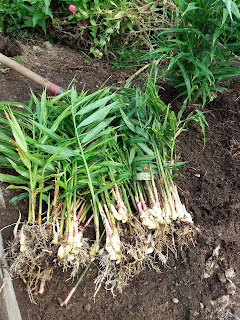I was going to save this image above to show when I write about the unexpected delights of gardening, and might still use it later. Instead, I want to write about leaves, fallen leaves specifically. I see a great deal of effort spent blowing (more on that below), raking, bagging, and, in many cases, transporting leaves to the dump. I find this to be a wasteful activity, thought I know the pleasures of physical labor outdoors on a sunny and crisp fall day. But I am going to suggest something that is no longer a radical gardening position: leave the leaves (or use them). Here are some reasons:
A tree exerts a great deal of energy producing leaves, and it makes the most sense to me to return them to the soil. Leaves add nutrients, structure, and organic matter to the soil, all things trees and plants need to thrive. Why toss these gifts of nature?
Many creatures, including butterfly and moth chrysalises, overwinter wrapped in leaves for protection. Tossing them out, or shredding them with a mower, kills these critters. Butterflies and moths (all insects actually) are in great enough decline already, and this is one thing you can do to help them.
Leaf blowers are highly polluting machines, that stir up all kinds of allergens and particulates into the air (dust, mold, animal poop-ick), damage hearing, and annoy your neighbors. They blast the leaves and kill the delicate critters mentioned above. Gentle raking or sweeping is far better for the critters ...and for you.
Like birds? Ever see them hop through leaves, dig s bit with their
beaks, and eat? Yep, they are eating the critters I want to protect,
but I also want to protect birds, many of them facing a steep
decline.
Saves money: using renewable leaves and pine straw saves
money- you don't need to purchase much mulch or soil amendments.
Saves gas too, from driving to a dump (and using a gas-powered leaf
blower). And, saves landfill space and reduces plastic (if you use plastic bags to bag them up).
Native plants: many native plants love and need leafy ground covers to thrive!
How do I deal with leaves (and pine straw)?
When I can, I let them lie where they fall. When I am concerned that the leaves will smother my plants, I gently (to protect overwintering critters) rake or sweep them under the tree, or onto my fallow vegetable garden beds. Sometimes, I compost them-leaves add great structure to compost, the necessary carbon to my nitrogen-heavy compost offerings (kitchen waste and coffee grounds). But this is my last resort, as composting can kill overwintering critters.
So, leave your leaves, please!








